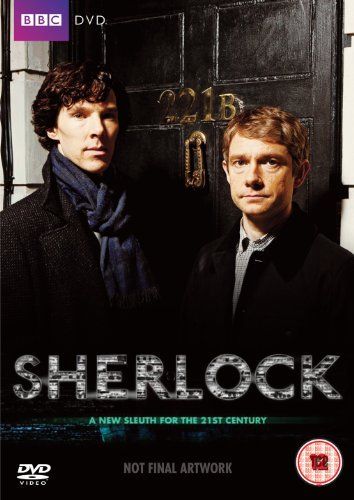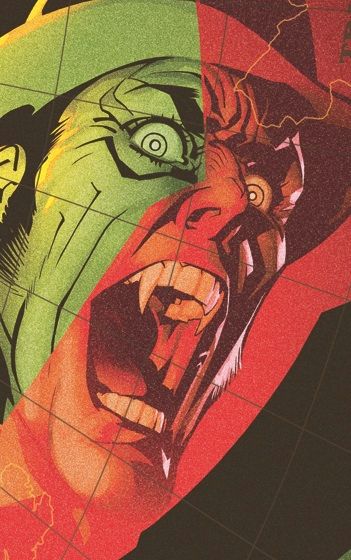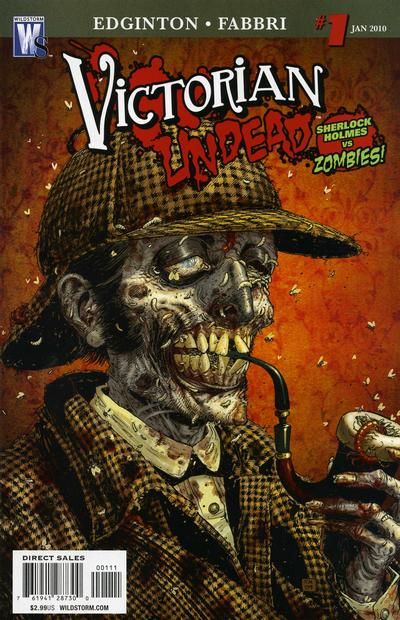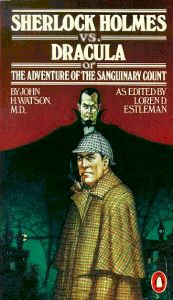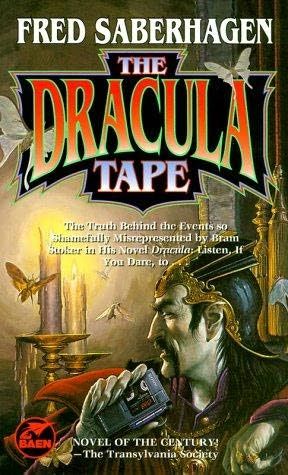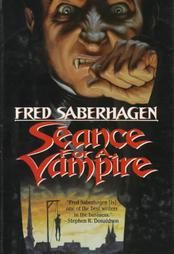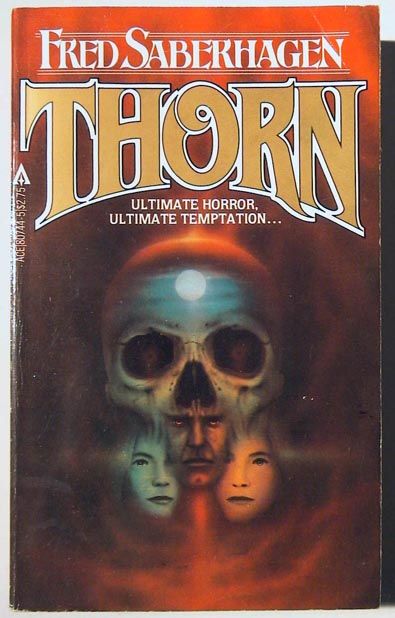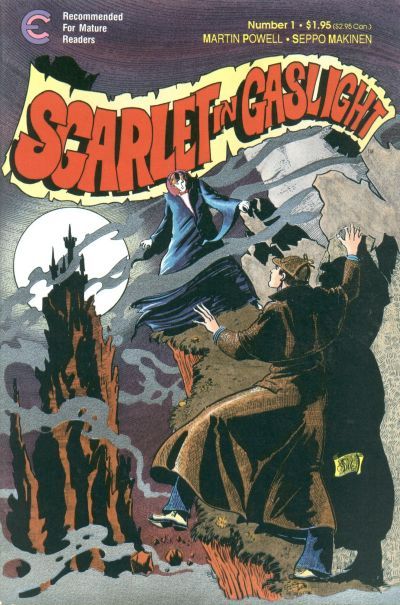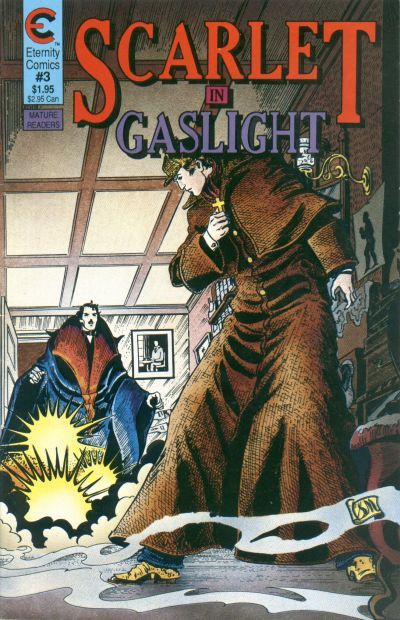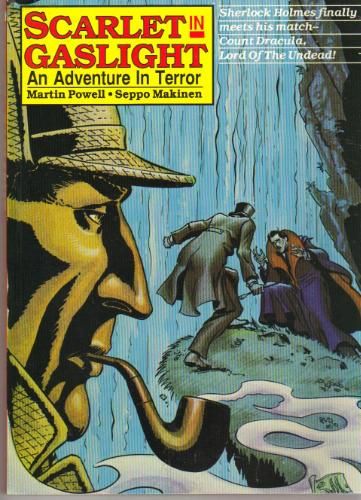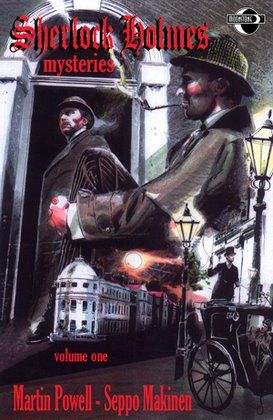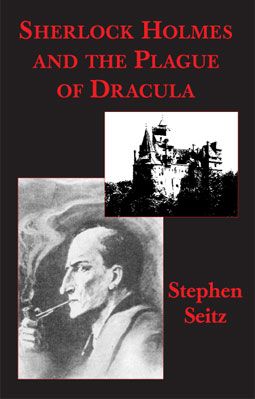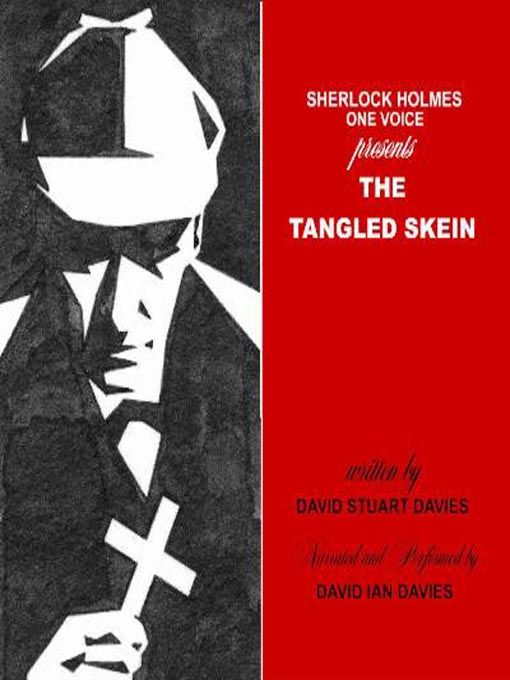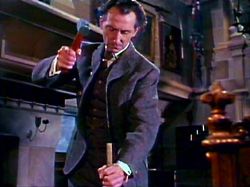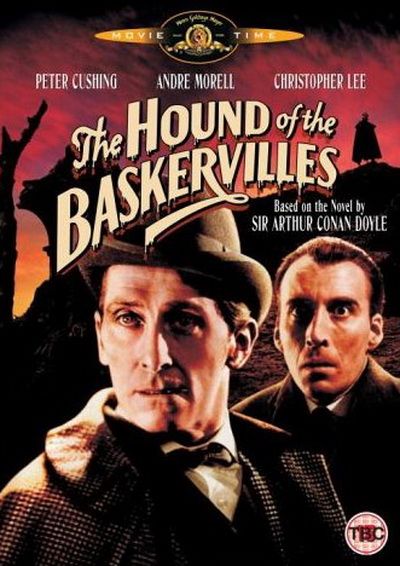I don't know about you, but I tend to be something of a genre binge reader. One week it's all westerns, the next it's old hero pulps, the week after that it might be sword-and-sorcery.
As it happens, this week it's largely been all about Sherlock Holmes.
This was triggered by a couple of things -- the arrival in the mail of The Pandora Plague, a pastiche teaming Harry Houdini with Baker Street's famous consulting detective, and the U.S. premiere of the BBC miniseries Sherlock.
Enjoyed them both, particularly Sherlock -- I was amazed to see how well A Study In Scarlet adapted to the modern setting, they really kept a lot of the set pieces from the novel almost beat-for-beat. (Though of course they couldn't use Conan Doyle's original idea of a cult of killer Mormons, as amusing as it might have been to give that particular plot point a twenty-first century makeover.)
...But the point is, as usual whenever I buy a book off Amazon, they immediately start recommending me a bunch of other books that are similar. So I ended up ordering a truckload of new Holmes pastiches that had been remaindered down to a penny or so. Like I said, binge reader.
Around the time these all started arriving, I got word that DC Comics is even doing one -- Victorian Undead II, featuring Sherlock Holmes vs. Dracula.
I'd skipped the first Victorian Undead, because even though I am a big Holmes fan, I'm really over the whole zombie thing.
Just not my cuppa, as the Brits say. (Though I might look into the Holmes/Jekyll and Hyde sequel one-shot one of these days.)
However, I am thinking seriously about picking up this new one, because I especially enjoy a good Holmes vs. Dracula riff. At least, I enjoyed it the other five times I've seen it.
The first one was way back when I was in high school, back in the Lake Oswego library, when I stumbled across Loren Estleman's Sherlock Holmes vs. Dracula or The Adventure of the Sanguinary Count.
Of all the versions I've seen, this one is probably the most reverent towards the source material. The novel parallels Bram Stoker's original Dracula novel, with Holmes and Watson inserted into the narrative about halfway through the story, just after the death of Lucy Westenra. (It's the natural place -- after Dracula's arrival in London.) Children are disappearing on Hampstead Heath, taken by a mysterious 'Bloofer Lady' in the dead of night and returned in the morning, dazed and amnesiac, with two small punctures on the neck. Of course it's a case for Sherlock Holmes.
What I liked about this one was Estleman's prose itself -- he does a great job of impersonating Doyle's Watsonian narrative style -- and also how the plot stands on its own, while at the same time folds beautifully into the original Stoker novel. The nice thing is, Dracula himself is off-stage for most of Stoker's book, which leaves him free to bedevil Holmes and Watson in person in the Estleman book. It's a good time.
The next time I came across a Holmes-Dracula pastiche was in college, when I discovered the Fred Saberhagen Dracula books.
It's funny, because it introduced me to a series of novels I love, but honestly The Holmes-Dracula File is one of the weakest entries in that series. (The entire book turns on the idea that Holmes and Dracula resemble one another so strongly that one can easily be mistaken for the other, and I really don't buy it.)
Still, there are lots of good things going on with the Saberhagen take on the story -- since this is a sequel to his earlier book The Dracula Tape, it doesn't have the burden of trying to incorporate the events of the Bram Stoker book directly into the narrative, though we do see several characters return. And more importantly, in Saberhagen's version, he does incorporate the very sensible idea that John Seward and Abraham Van Helsing, despite all the times Bram Stoker told us otherwise, are simply not very good doctors. (Saberhagen postulates, for example, that it was Van Helsing's moron idea of giving Lucy Westenra four blood transfusions without any regard for checking blood types that killed her, and that Dracula only turned her into a vampire in the first place as an effort to prolong her life.)
In The Holmes-Dracula File, we get another look at the questionable medical ethics of John Seward, as well as an interesting view of Sherlock Holmes' early life, and even the Giant Rat of Sumatra. This particular book also has the best explanation for why Holmes was willing to go along with a supernatural explanation for vampirism, despite his stated contempt for such in the original Conan Doyle (The Hound of the Baskervilles and "The Sussex Vampire," in particular, but there were lots of other times.)
Saberhagen actually had Holmes meet Dracula one more time, in Seance for a Vampire.
That one had Holmes and Dracula enter into an uneasy alliance to defeat a scheme of the mad monk, Rasputin. I rather like it; in fact I think I prefer this entry to The Holmes-Dracula File. But it's not your best entry point. I'd recommend The Dracula Tape, An Old Friend of the Family, Thorn, A Matter of Taste... any of those are a good starting place and I consider them better than the Holmes books in the series.
(But the Holmes ones are still okay. It's just that the other books are better.)
Then there's the comic book version.... the other one, that is, long before Victorian Undead was a gleam in anyone's eye.
Scarlet in Gaslight came out in 1989, originally as a four-issue mini from Eternity Comics.
Given the publisher's name, I suppose it's ironic they folded as quickly as they did, but that was just what was going on in the late 1980s.... in the post-Ninja Turtle glut, black-and-white comics publishers sprouted like dandelions, and most of them lasted about as long.
However, the strong script from Martin Powell saved it for me from being just another crappy 80s indie comic, and though the art from Seppo Makinen originally struck me as being on about the level of good fanzine art, it grew on me. And because they were -- unlike so many others in the late 1980s comics scene -- actually smart about the contracts they signed, Scarlet in Gaslight has stayed in print pretty continuously since then.
Of all the various attempts I've seen at a Holmes-Dracula meeting, I think Powell's may be the one that features the most inventive plot twists. He respects the original works enough to placate a purist, but you can tell he spent a lot of time thinking about it and extrapolating possibilities... in particular, I really dug Powell's notion that Professor Moriarty would look at vampirism as another tool to be exploited, something to add to the arsenal.
It's just come back in a nice new edition from Moonstone, incorporating not only Scarlet in Gaslight but also the follow-up, A Case of Blind Fear, featuring Holmes and Watson taking on H.G. Wells' Invisible Man.
This hefty trade collection retails under the name Sherlock Holmes Mysteries Volume One, which suggests there will be a volume two. One hopes they will gather the remaining Powell-Makinen Holmes crossover comics pastiches in there, featuring the War of the Worlds and the Phantom of the Opera, as well as the return of Professor Moriarty.
Now, for a long time I thought those were all the Holmes-Dracula crossovers in existence. But this week, as part of my Holmes binge, I've found two more.
The first to arrive was the delightful Sherlock Holmes and the Plague of Dracula by Stephen Seitz, which immediately leapfrogged over the other selections in the house to take first place as my current favorite take on the idea. Here's the blurb: “The world is big enough for us, no ghosts need apply,” Sherlock Holmes said. But that was before the remarkable adventure Stephen Seitz found recounted by Dr. Watson in previously undisclosed papers. When Mina Murray visits Holmes at 221B Baker Street to help her locate her fiancée who has traveled to Transylvania to help a Count Dracula secure an English estate, the adventure begins. Holmes and Watson are soon on their way to a land far eerier than the gloomy moors of Dartmoor they had known when involved with the Hound of the Baskervilles. Sherlock Holmes finds himself engaged in a confrontation that unsettles his opinions about the occult and threatens his health, his sanity and his life.
I recommend this unreservedly, mostly because it takes a non-supernatural view of the events of Stoker's original novel, and that alone makes this a much more, well, Holmesian pastiche than any of the others. It's really smart, and again, amazingly respectful of the original works while at the same time turning them completely sideways. It's my favorite kind of pastiche. I won't spoil it for you, but if you have any interest in Sherlock Holmes or Dracula, of all the different takes on it listed here, this would be my recommendation as being the pick of the lot. (Although, in fairness, I have yet to read Victorian Undead II and for all I know it might very well be made of awesome. Even so, I think I'd still put my money on this one.)
The other one I'm also enjoying, though not quite as much as the Stephen Seitz book. The Tangled Skein is by David Stuart Davies, who's become something of a cottage industry all by himself when it comes to Sherlock Holmes pastiches.
Davies himself is very much a Holmes purist, paying careful attention to the chronology of the original Doyle stories. This particular novel begins with a sort of aftermath episode with Holmes and Watson once again encountering the villain of The Hound of the Baskervilles -- I won't name him, just on the off chance there are one or two of you out there who haven't read it. (It is a mystery, after all, and I have a very strict rule about never giving away an ending to a detective story, now matter HOW widely known it might be. Call it the Soylent Green rule.)
But the Baskerville episode is mostly an overture to the main event with Dracula. The story is interesting enough, picking up once again at the natural place for Holmes to enter Dracula's affairs -- the phantom lady preying on the children of Hampstead Heath -- but the twist here is that Davies is not a Dracula purist, and largely disregards Stoker's text. Instead, this Dracula is much more like the Hammer Films version. Which works for me because it means that here, Dr. Van Helsing is much more the Hammer films version, as well.
Specifically, it means this Van Helsing is not the kind of pseudo-scientific dumbass that goes around transfusing everyone in sight without so much as getting out a microscope first. (I know, I know, I should let it go, but even when I was a kid that part of Stoker's book always annoyed me.) The Van Helsing portrayed here is smart enough that one can believe that Sherlock Holmes would respect him, and anyway I really like the idea of a sort of Holmes-Hammer crossover. The plot certainly has that hell-for-leather pacing of a Hammer Dracula, and the whole thing circles around again to Dartmoor and The Hound of the Baskervilles in a nice little twist at the end.
Worth a read, certainly. Or even a listen. We actually got this one on CD as an audiobook, because we're taking a little bookscouting trip to Oak Harbor for Thanksgiving this year and I thought it would be fun to have something to listen to in the car on the way. The reading by David Ian Davies (no idea if he's any relation to the author) is pretty good, too.
As far as I know, that's the lot. I'm still looking forward to Victorian Undead II, but it has a lot to live up to if it's hoping to beat the Holmes-Dracula stories that are already out there.
*
Have a safe and happy Halloween, all. We have a big pile of old comics to give out to neighborhood trick-or-treaters -- the few that we still get, anyway, that bitch Dear Abby tried to ruin it for everyone and nearly succeeded -- and as usual, we probably will settle in with a horror or suspense classic once the doorbell stops ringing. This year, I suspect it'll be the Hammer Hound... and, of course, the new episode of Sherlock.
See you next week.


